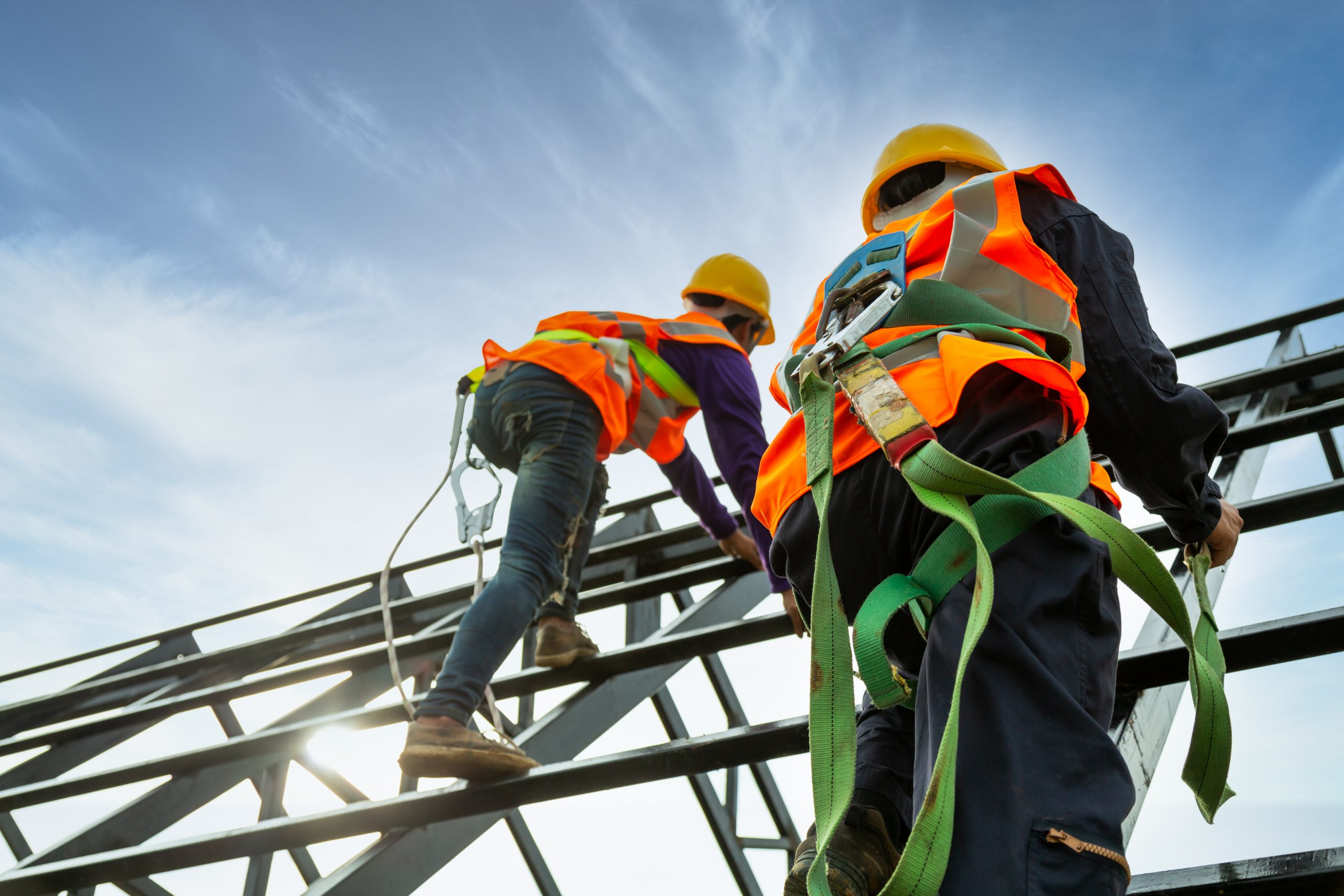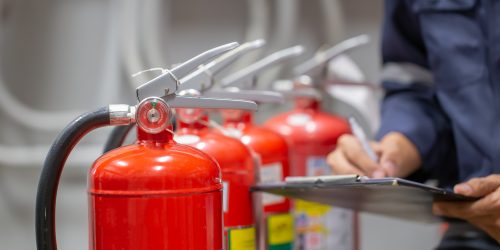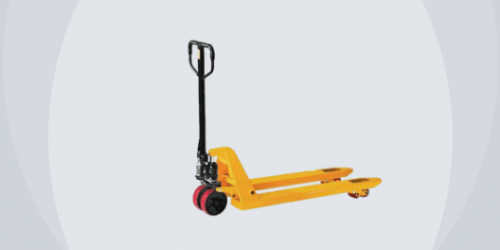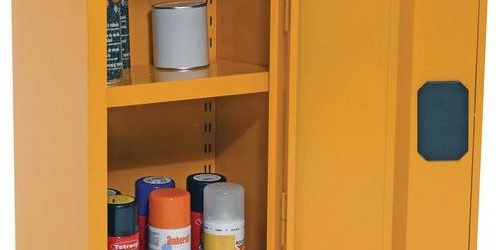What safety standards apply to operating at heights?
There are many strict regulations about working at heights and wearing a harness. The risks associated with falling from a height are major and the employer must ensure that employees are equipped with PPE (Personal Protective Equipment) and ensure they have received training for working at heights. In this article, find out the main safety requirements for working at heights and the answer to the most frequently asked questions pertaining to this topic.

Risks related to falls at work
Far from the world of Industry 4.0, accidents at work can be fatal or cause injuries within companies. Employers have an obligation to protect their staff and provide them with the safest possible working conditions.
In Europe, there are nearly 500,000 falls per year, with 40,000 resulting in long-term physical injuries and, in about 1,000 cases, death.
As a fall from a distance is, on average, more serious than a fall on ground level, the safety regulations for working at heights have been tightened up and checks on the use of personal and collective protection have become increasingly rigorous. The focus is on using the right preventive measures to ensure the health and safety of workers.
Safety must be a priority for companies, as lives may be at stake. The number of workplace accidents and the potentially catastrophic hazards of falling can both be reduced by wearing personal protective equipment (PPE) at work.
The building and public works sectors are particularly affected. In fact, there are many occupations involving working at heights including, roof repairs, window installation, staircase installation, construction, etc. — and where there is therefore a risk of falling, for example from ladders or scaffold towers.
Safety harness and working at height regulations: the basics
To keep employees safe at work, employers must take control by considering the prevention principles and protective measures outlined in the safety requirements for working at heights.
Protective equipment
According to the regulations for working at height with a harness, a combination of at least three pieces of work equipment is required to protect the worker from the risk of falling and to avoid injury:
- A fall arrest harness;
- A fall arrest system;
- An interface/anchor to the structure.
The framework set by the regulations and the resulting standards provides an answer.
However, developing and evolving these safety standards has to be done with the manufacturers’ participation. They are also making significant efforts to make the use of protective equipment more common. They seek to make workers want to use PPE through new, innovative means.
The key is to find a compromise between users, manufacturers, and legislators.
What are the regulations for working at height? According to Directive 89/656/EEC of 1989 (updated in 2019), the following European measures are in force for work at height:
- Eliminate the hazard entirely, whenever possible;
- Set up a risk prevention device (e.g. a guardrail as a physical barrier between the employee and the hazard);
- When working with a fall arrest device (harness, lanyard, and anchor point), the user should not be able to reach any danger zones. For example, a worker wearing a fall arrest system can use a 6-metre lanyard to connect to an anchorage point that is at least 7 meters under the height where there is a risk of falling.
Article 3 also states: “Personal protective equipment shall be used when the risks cannot be avoided or sufficiently limited by technical means of collective protection or by measures, methods or procedures of work organization.”
The importance of wearing a safety harness while working at a height
Wearing a fall protection harness is required in the following cases:
- If an employee is working at height, they are strongly advised to use a fall arrest and restraint lanyard with the use of a harness. The fall arrest lanyard absorbs shocks and secures the anchor point.
- There is still a risk even when working in situations at low heights. Wearing a safety harness is always recommended to protect the wearer against falls and limit personal injury.
Answers to recurring questions about working at height and wearing a harness
Having discussed the solutions and regulatory requirements for working at heights, it is now time to provide clear answers to the questions that are often asked regarding this topic.
Do standards involving PPE complicate working at height?
Contrary to what some might think, the opposite is true. In fact, such standards serve to reduce risks by ensuring a certain quality of PPE in general, and in particular, fall arrest products. As such, workers can safely carry out their work with confidence and are more efficient. This is why it is essential to “popularise” these safety standards and their daily application at work.
Is safety harness training necessary to prevent the risk of falls and injury?
When it comes to the question “should we make it a rule or make people personally responsible,” it would be tempting to simply implement a rule to that effect. However, it would be more beneficial in the long term to provide employees with the resources they need to change their workplace habits, so that everyone who works at height becomes responsible for their own safety, for example by encouraging them to use a harness.
To minimise occupational risks, three joint actions should be implemented:
- Predict;
- Prevent;
- Train.
Adequate training given by competent people is required to provide employees with information on the correct use of PPE and to ensure compliance with safety instructions or guidelines for work at height. This helps to reassure both the entrepreneur and their employees.
Now that you know the safety requirements for working at heights, why not browse our range of fall-prevention equipment products






